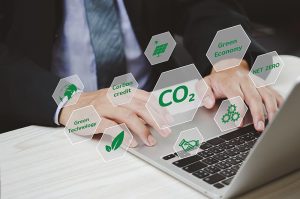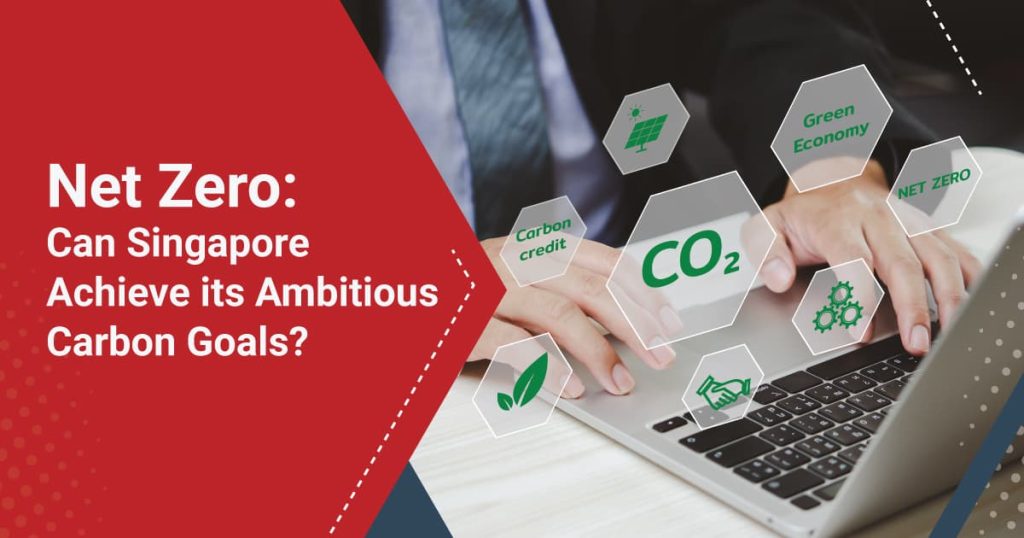
Climate change has dire consequences for the world, and countries, including Singapore, are taking active steps to delay the process.
Greenhouse gases, in particular, have been identified as a primary driver of climate change, and hence the need to reduce emissions resulting from them.
As part of its climate action efforts, Singapore signed and ratified the Paris Agreement, a legally binding international agreement on climate change, in 2016.
The treaty calls for limiting global warming to 1.5 degrees yearly, which means that global greenhouse gas emissions must reach its net zero target by 2050. This is a goal that Singapore commits to, together with over 70 other countries, that cover about 76% of global emissions.
In this article, we discuss whether Singapore is on track to achieving its emissions goal.
What Are Singapore’s Initiatives to Meet its Carbon Goals?
Singapore has implemented several initiatives to achieve its ambitious carbon goals timely. We explore some of them below:
Progressive Increases in Carbon Tax
Singapore is the first country in Southeast Asia to implement a carbon price under the Carbon Pricing Act of 2018. This tax aims to reduce greenhouse gas emissions and support its shift to a low-carbon city.
On 8 Nov 2022, Singapore’s Minister for Sustainability and the Environment, Grace Fu, emphasised plans to raise the country’s carbon tax under the Carbon Pricing (Amendment) Bill.
It will have a five-fold rise from the current S$5 per tonne to S$25 for greenhouse gas emissions in 2024 and 2025. The figure will increase to S$45 per tonne from 2026 and beyond.
These steady increases will put Singapore on its trajectory to hit between S$50 and S$80 per tonne by the year 2030.
Minister Fu highlighted the need for an “effective carbon price” to trigger carbon mitigation solutions to aid the country in attaining its net zero emissions goal by 2050.
This change in price trajectory is significantly differs from the original plan in 2018 to raise it to a figure between S$10 and S$15 per tonne.
Related Read: Sustainability in Singapore: How it Spurs Sustainable Innovation »
Framework for International Carbon Credits
A framework will also be established for International Carbon Credits (ICC).
These are tradeable certificates representing the decrease or elimination of emissions from the atmosphere created by projects or programmes outside of Singapore.
Businesses can use these credits to meet part of their carbon tax liabilities – in essence, the framework is a complementing means for firms to reduce their carbon footprint.
Singapore’s carbon tax compliance scheme will boost the demand for high-quality ICC while telling firms that they must act.
The framework will also ensure that the credits submitted have a high degree of environmental integrity and are compliant with the Paris Agreement.
The ICC surrendered will be limited to a cap of 5% of taxable emissions.
Related Read: What is Singapore’s Role in Sustainable Financing for SEA? »
The Hydrogen Alternative
Singapore currently depends almost entirely on natural gas as its power source, and it has limited land available to construct solar facilities.
Lately, it has begun to import renewable electricity from Malaysia and Laos. The city-state intends to look towards using low-carbon ammonia to generate power.
If its plans succeed, Singaporeans may have access to low-carbon hydrogen-generated electricity from 2027. The fuel is expected to supply Singapore with up to half its power requirements by 2050.
Another S$129 million will be dedicated to supporting hydrogen research and development under the Low Carbon Energy Research Project. To date, S$55 million of funding has already been awarded to support its move.
The Singapore government also aims to implement hydrogen trading by creating industry standards and frameworks.
Related Read: How Feasible Is Solar Energy in Southeast Asia? »
What Can Businesses in Singapore Do?
While the Singapore government brings up efforts to reach its carbon goals, businesses can also play their part to help.
Here are some actions they could engage in:
Partake in the Carbon Market
The growing carbon market and shifting policy landscape present an opportunity for businesses to participate without worries.
Singapore’s carbon tax hike drives a clear message to businesses that they must also reduce their emissions in line with national ambitions.
Large carbon emitters can leverage its unique hybrid carbon tax mechanism to reduce their tax liabilities under the ICC framework.
And the numbers prove that companies are increasingly willing to take responsibility for their emissions. South Pole and CDP’s recent report shows that 96 firms purchased voluntary carbon credits as compared to just 11 for compliance reasons.
With the impending increase of carbon taxes, companies must get familiar with the market and create a long-term carbon compensation plan to get ahead.
This way, they will be better positioned to meet their tax obligations in a less costly manner and be ready for any policy changes in the future.
Purchasing carbon credits can also help to scale the development of new carbon removal technologies to add to Singapore’s goals. Although there are limited carbon credits available now, increased demand may help improve supply.
Related Read: Relooking Sustainability After COVID-19 »
Contribute to R&D For Immature Carbon Removal Technologies
Companies in Singapore can contribute to the research and development of immature carbon removal technologies.
Examples include low-carbon hydrogen projects, carbon capture, utilisation and storage (CCUS), and carbon capture and storage (CCS).
They can also invest in novel technologies like bioenergy with carbon capture storage (BECCS) to further support new technology creation.
Companies Can Tap Into Other Government Initiatives to Defray Carbon Costs
Going green and decarbonising can be costly. Businesses must consider expensive investments in low carbon technologies, training and upskilling their employees, and compliance costs.
Apart from the ICC, they can tap into the available government incentives offered. Some examples are:
- The Energy Efficiency Grant (EEG)
- The Energy Efficiency Fund (E2F)
- The Enterprise Development Grant (EDG)
These can help firms to defray costs associated with implementing green initiatives and reducing carbon output.
Is Singapore On Track to Reach Net Zero?
On 25 October 2022, Singapore cut its carbon dioxide emissions forecast and expects to hit peak emissions earlier than 2030.
It aims to lower its carbon emissions target for 2030 to 60 million tonnes of carbon dioxide, 5 million tonnes less than the original target of 65 million tonnes.
The country’s strong resolve is clearly evident from its rapid, bold, and yet calculated increase in carbon tax and other bolstered efforts.
Hence, Singapore’s ambitious goals look realistic to achieve despite its intrinsic limitations thanks to these efforts, the close monitoring of technological developments, and a shift to an ESG mindset.


